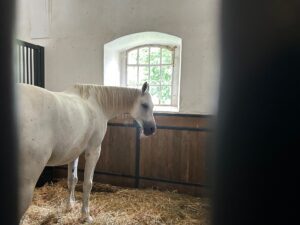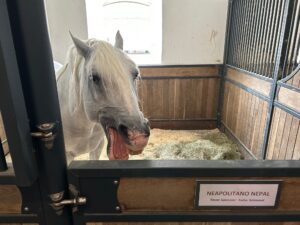Where do Lipizzaner stallions come from, why are the foals black, and where can you see the white dancing horses in Austria? Whether you want to watch these horses, buy them or simply know more about them, exploit this short guide below.
Where Do Lipizzaner Stallions Come From?

Following the first successful breedings, local breeders established the race of 'Spanish Karst' horses. From their appearance, Lipizzans are athletic yet their fine mane and tail makes them look utterly graceful.
For the Habsburgs, the Lipizzans were ideal allrounders: Not just were they great for military purposes, but they also excelled in elegant shows, carousels and parades at the Imperial Court in Vienna. All in all, the Lipizzans were fantastic dressage horses. Hence, the Habsburg Monarchs decided to breed them from the 16th century.
But not only Lipica breeds Lipizzans. Lipizzaner stallions are bred across Europe, mostly in Austria and the old crownlands of the Habsburg Empire: for example Bosnia, Croatia, Hungary, Italy, Romania Serbia, Slovenia, and Slovakia. On top of that, you can find major private breeding studs in Denmark, France, Serbia, Slovenia, South Africa and the United States (Illinois).
Why Are Lipizzan Foals Black?

In general, there are six main breeding lines of Lipizzaner stallions, which carry their names from their male progenitors: Conversano, Favore, Maestoso, Neapolitano, Pluto, Siglavy. More specifically, the name of each horse derives from combining the name of its father and its mother.
Where The Spanish Riding School Sources Its Lipizzans

During their first years, the young Lipizzans spend their summers on the lush green pastures of Stubalm in the Styrian mountains. As they move around the partly steep and rocky slopes they train their joints and tendons. This is vital for their later career.
At the age of three and a half years the Lipizzans usually arrive at the Spanish Riding School in Vienna to start their training. At that time in their lives, they are still dark coloured. As for total life expectancy, a Lipizzaner can reach until about 40 years of age. In the past years, the Federal Stud Piber has been making a real effort to breed more Lipizzaner stallions in order to secure sufficient supply to the Spanish Riding School. Today, the Lipizzans actually count as an endangered domestic animal breed.
Training At The Hofreitschule

The young Lipizzaner stallions train at the Spanish Riding School as well as at Heldenberg. In the Riding School’s large Winter Riding Hall the public can watch their daily Morning Exercises to classical music. In fact, it takes approximately six years of training for a Lipizzaner to graduate to a school stallion.
As a result of the careful breeding and extensive training procedure the Spanish Riding School values each horse at around EUR 100,000.
Where To See The Lipizzaner Stallions
Almost throughout the year you can see the Lipizzaner Stallions in action at the elegant Spanish Riding School, either during a formal Performance, an informal Morning Exercise or during a stables tour. In July and August, you may find the mares with their foals grazing in Burggarten, right next to the Vienna State Opera!


Location: Wimpffen-Gasse 5, 3704 Kleinwetzdorf
How to get there: The best way to go there is by car. If you'd like to rent a car, go to car rental Vienna for best tips.
In addition, the Federal Stud Piber, with historic Piber Castle at the centre, offers guided tours through the stud and visits to their alpine pastures on a regular basis.
explore more Vienna Attractions
find out more of What To Do In Vienna
back to Vienna Unwrapped homepage







